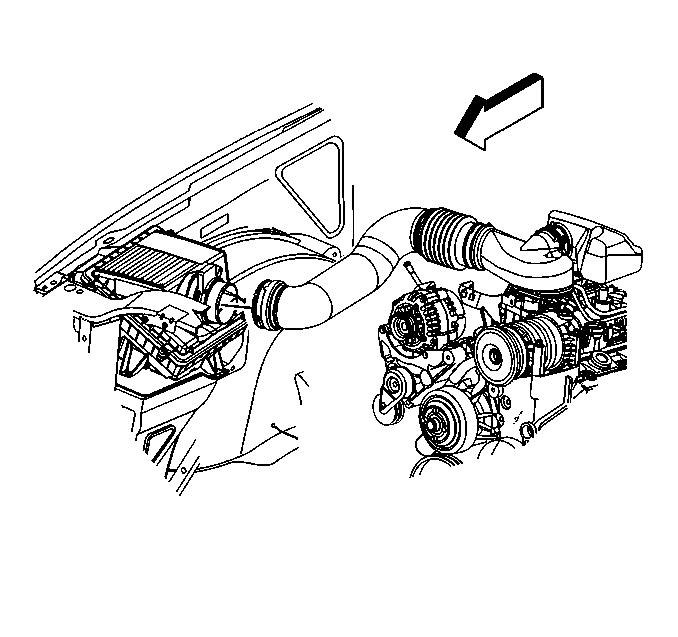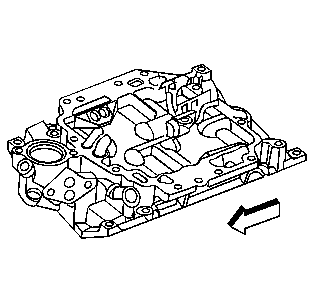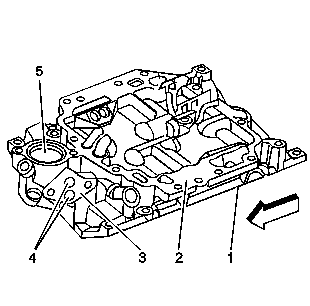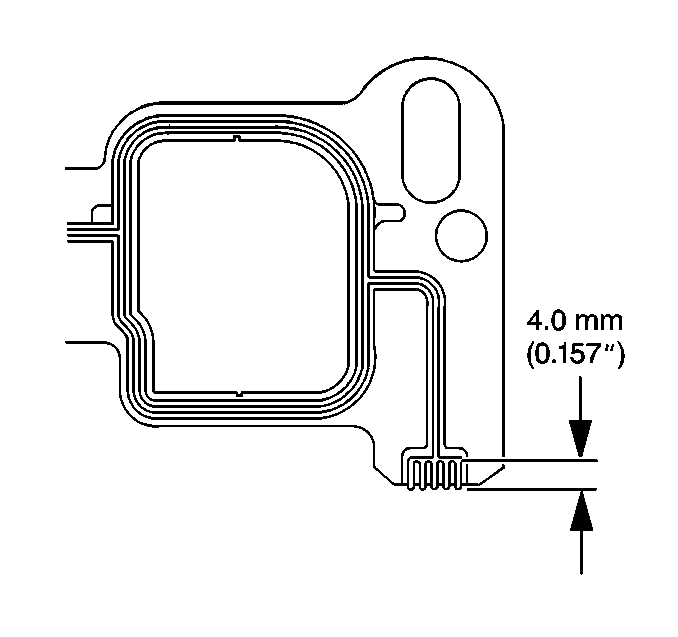
Notice: Apply the proper amount of the sealant when assembling this
component. Excessive use of the sealant can prohibit the component from sealing
properly. A component that is not sealed properly can leak leading to extensive
engine damage.
- Apply a 4.0 mm (0.157 in) patch of adhesive GM P/N 12346141
or equivalent to the cylinder head side of the lower intake manifold gasket
at each end.
Important: The lower intake manifold gasket must be installed while the adhesive
is still wet to the touch.
- Install the lower intake manifold gasket onto the cylinder head.
Use the gasket locator pins in order to properly seat the lower intake
manifold gasket on the cylinder head.

Notice: Apply the proper amount of the sealant when assembling this component.
Excessive use of the sealant can prohibit the component from sealing properly.
A component that is not sealed properly can leak leading to extensive engine
damage.
Important: The lower intake manifold must be installed and the fasteners tightened
while the adhesive is still wet to the touch.
- Apply a 5 mm (0.197 in) bead of adhesive GM P/N 12346141
or equivalent to the front top of the engine block.
- Extend the adhesive bead 13 mm (0.50 in) onto each
lower intake manifold gasket.
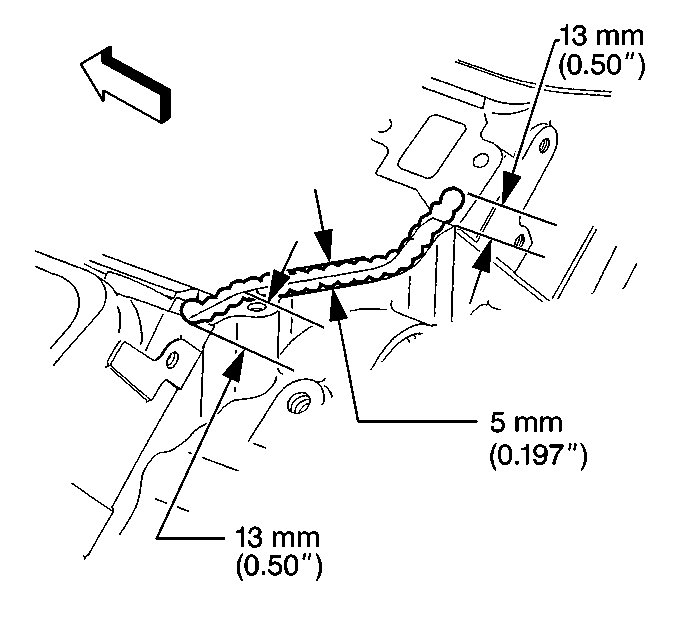
- Apply a 5 mm (0.197 in)
bead of adhesive GM P/N 12346141 or equivalent to the rear top
of the engine block.
- Extend the adhesive bead 13 mm (0.50 in) onto each
lower intake manifold gasket.
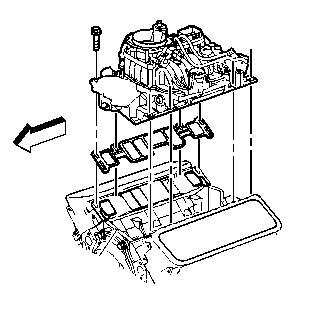
- Install the lower intake manifold onto the engine block.
Notice: Use the correct fastener in the correct location. Replacement fasteners
must be the correct part number for that application. Fasteners requiring
replacement or fasteners requiring the use of thread locking compound or sealant
are identified in the service procedure. Do not use paints, lubricants, or
corrosion inhibitors on fasteners or fastener joint surfaces unless specified.
These coatings affect fastener torque and joint clamping force and may damage
the fastener. Use the correct tightening sequence and specifications when
installing fasteners in order to avoid damage to parts and systems.
- If reusing the fasteners,
apply threadlock GM P/N 12345382 or equivalent to the threads
of the lower intake manifold bolts.
- Install the lower intake manifold bolts.
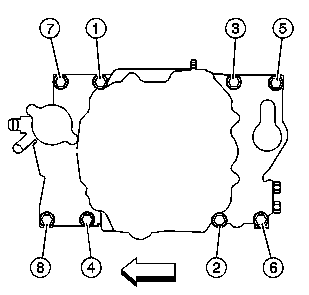
Notice: Proper lower intake manifold fastener tightening sequence
and torque is critical. Always follow the tightening sequence, and torque
the intake manifold bolts using the 3 step method. Failing to do so may distort
the crankshaft bearing bore alignment and cause damage to the crankshaft bearings.
- Tighten the lower intake manifold bolts.
Tighten
- Tighten the bolts on the first pass in sequence (1-8) to
3 N·m (27 lb in).
- Tighten the bolts on the second pass in sequence (1-8) to
12 N·m (106 lb in).
- Tighten the bolts on the final pass in sequence (1-8) to
15 N·m (11 lb ft).
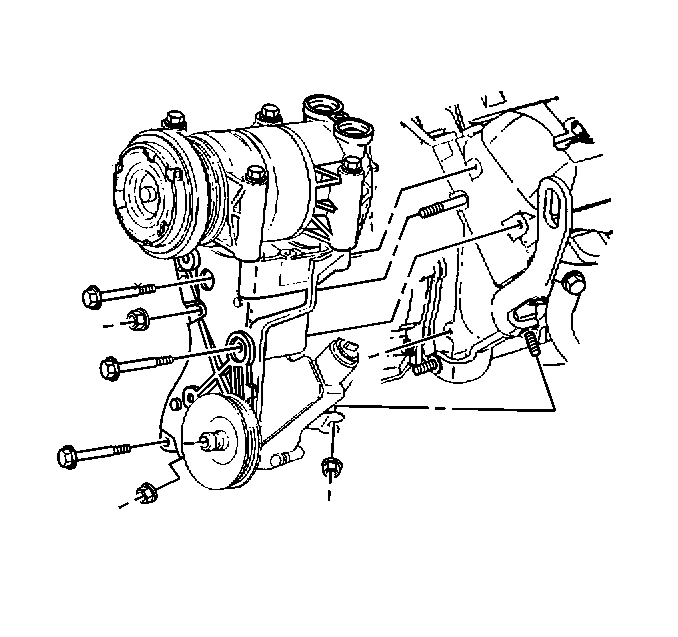
- Position the power steering
pump mounting bracket.
- Install the three bolts and the nut.
Notice: Use the correct fastener in the correct location. Replacement fasteners
must be the correct part number for that application. Fasteners requiring
replacement or fasteners requiring the use of thread locking compound or sealant
are identified in the service procedure. Do not use paints, lubricants, or
corrosion inhibitors on fasteners or fastener joint surfaces unless specified.
These coatings affect fastener torque and joint clamping force and may damage
the fastener. Use the correct tightening sequence and specifications when
installing fasteners in order to avoid damage to parts and systems.
- Install the front
nut for the power steering pump rear bracket.
Tighten
Tighten the power steering pump mounting bracket bolts, the nut, and
the power steering pump rear bracket nuts to 41 N·m (30 lb ft).
- Install the drive belt. Refer to
Drive Belt Replacement
.

- Install the EGR valve
inlet pipe to the intake manifold and the exhaust manifold.
Tighten
- Tighten the EGR valve inlet pipe intake manifold nut to 25 N·m
(18 lb ft).
- Tighten the EGR valve inlet pipe exhaust manifold nut to 30 N·m
(22 lb ft).
- Tighten the EGR valve inlet pipe clamp bolt 25 N·m
(18 lb ft).
- Install the spark plug wire harness retainer on the EGR valve
inlet pipe.
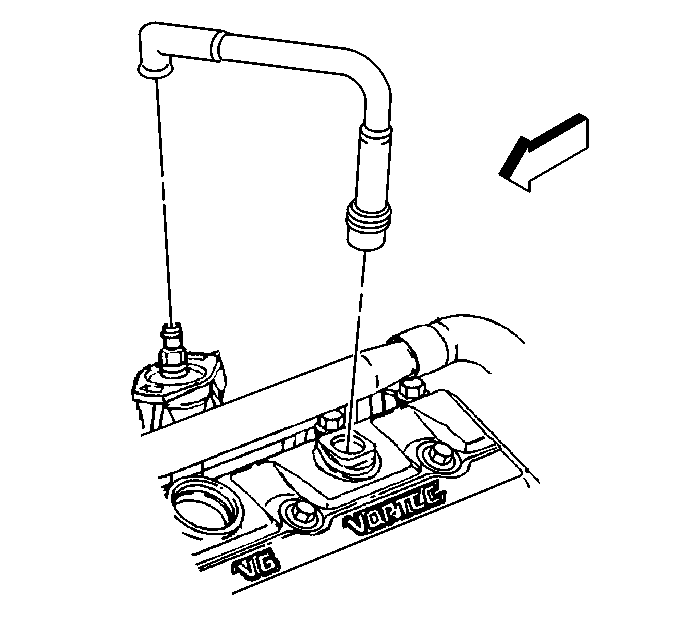
- Install the PCV valve
hose assembly to the intake manifold and the valve rocker arm cover.
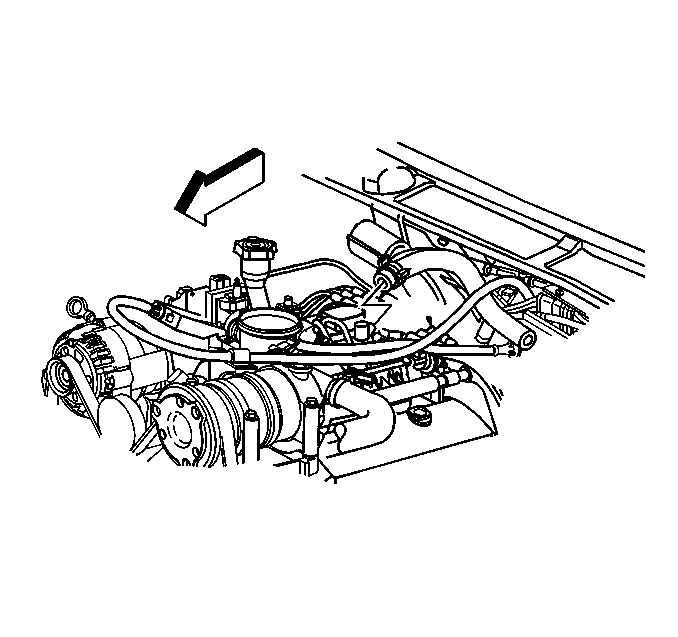
- Install the power brake
booster vacuum hose to the intake manifold.
- Install the EVAP canister purge solenoid valve hose. Refer to
Evaporative Emission Canister Purge Solenoid Valve Replacement
in Engine Controls - 4.3L.
- Install the fuel supply and return pipes to the rear of the intake
manifold. Refer to
Fuel Hose/Pipes Replacement - Engine Compartment
in Engine Controls - 4.3L.
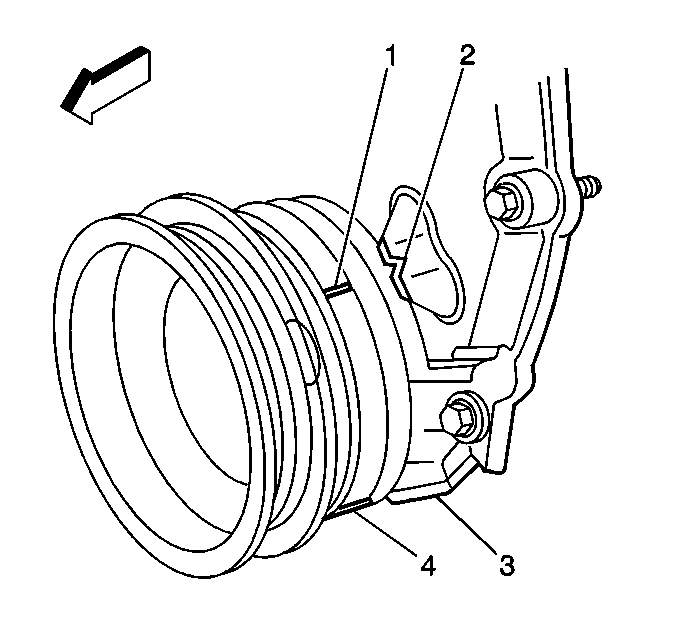
Important: In order to install the distributor for the correct engine timing, position
the engine to number one cylinder top dead center.
- Remove the spark plug for number one cylinder.
- Rotate the crankshaft until number one cylinder is in the compression
stroke.
- Align the two reference marks on the crankshaft balancer (1,4)
with the two alignment marks (2,3) on the front cover.
- Install the spark plug. Refer to
Spark Plug Replacement
in Engine Controls - 4.3L.
- Install the distributor. Refer to
Distributor Replacement
in Engine Controls - 4.3L.
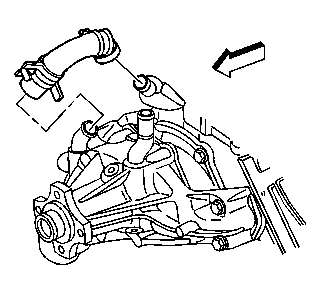
- Install the water pump inlet hose to the intake manifold.
- Install the heater hoses to the engine. Refer to
Heater Inlet Hose Replacement
and
Heater Outlet Hose Replacement
in Heating Ventilation and Air
Conditioning.
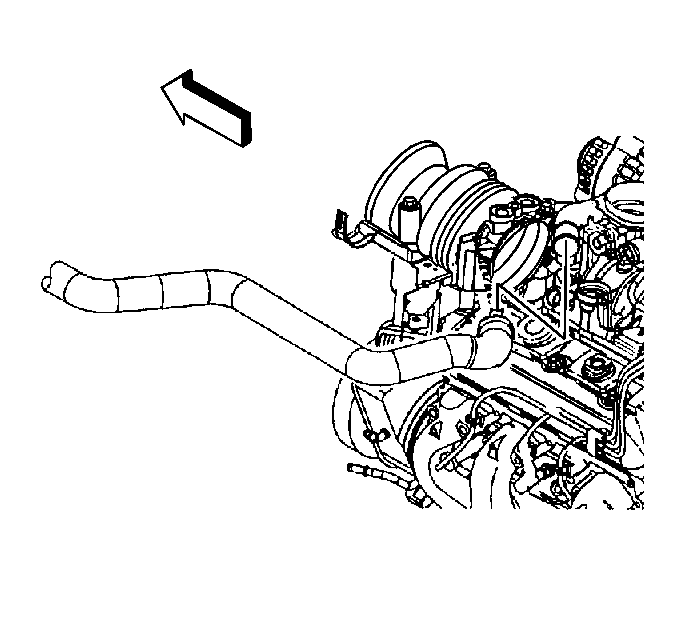
- Install the radiator inlet
hose to the thermostat housing.
- Refill the cooling system. Refer to
Cooling System Draining and Filling
in Engine Cooling.
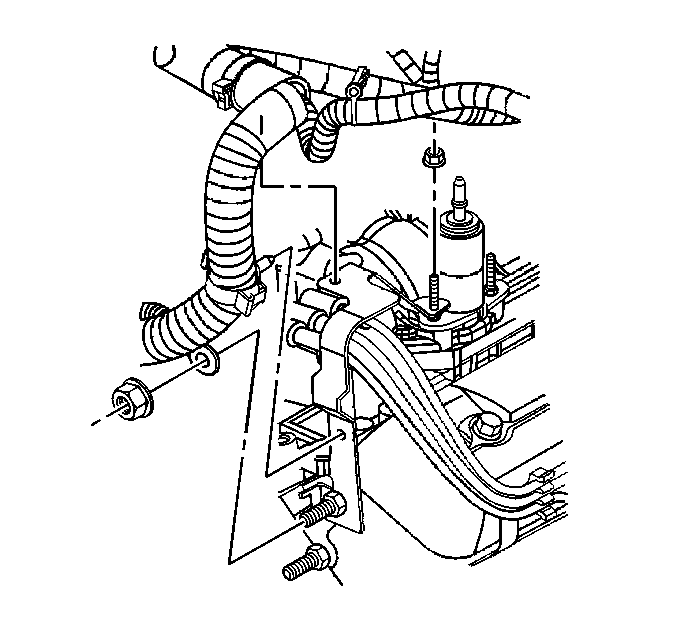
- Position the engine wiring
harness and the engine wiring harness brackets.
- Install the stud at the rear of the right cylinder head for the
engine wiring harness bracket.
Tighten
Tighten the engine wiring harness bracket stud to 25 N·m
(18 lb ft).
- Install the nut holding the engine wiring harness bracket to the
EVAP purge canister solenoid stud.
Tighten
Tighten the engine wiring harness bracket nut to 9 N·m
(80 lb in).
- Install the nut and the ground wire to engine wiring harness
bracket stud at the rear of the right cylinder head.
Tighten
Tighten the ground wire nut to 16 N·m (12 lb ft).

- Install the nuts and the
engine wiring harness bracket to the upper intake manifold studs.
Tighten
Tighten the engine wiring harness bracket nuts 12 N·m (106 lb in).
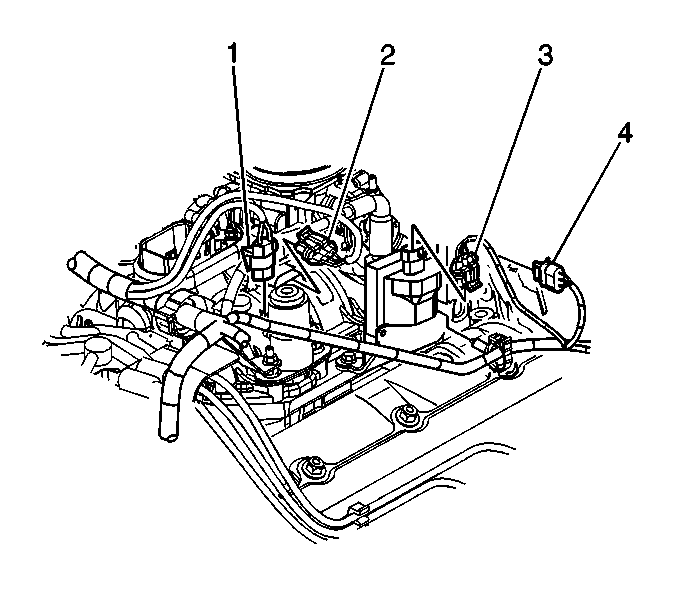
- Connect the following
electrical connectors:
| • | The EVAP canister purge solenoid valve (1) |
| • | The manifold absolute pressure (MAP) sensor (2) |
| • | The ignition control module (ICM) (4) |
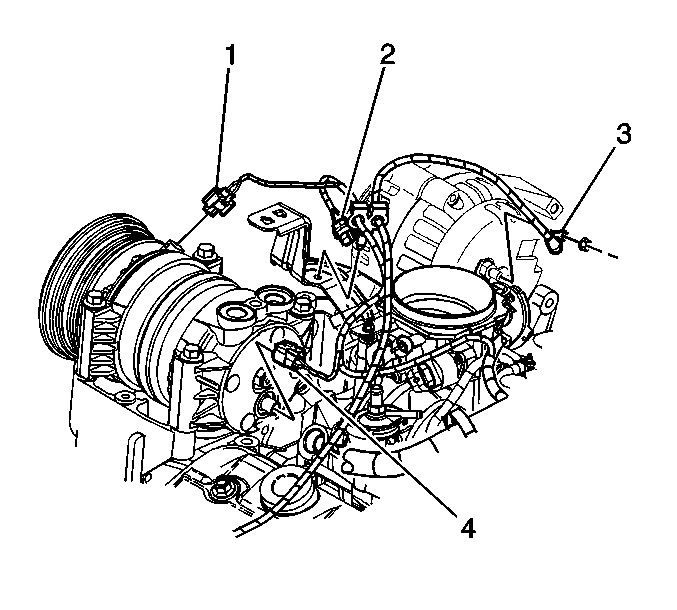
- Connect the following
electrical connectors:
| • | The A/C pressure switch (4), if equipped |
| • | The A/C compressor clutch (1), if equipped |
| • | The exhaust gas recirculation (EGR) valve (2) |
| • | The generator battery positive cable (3) |

- Connect the following
electrical connectors:
| • | The fuel meter body assembly (3) |
| • | The throttle position (TP) sensor (1) |
| • | The idle air control (IAC) motor (2) |
| • | The engine coolant temperature (ECT) sensor (4) |

- Connect the AIR crossover
pipe to the AIR pipe assemblies.
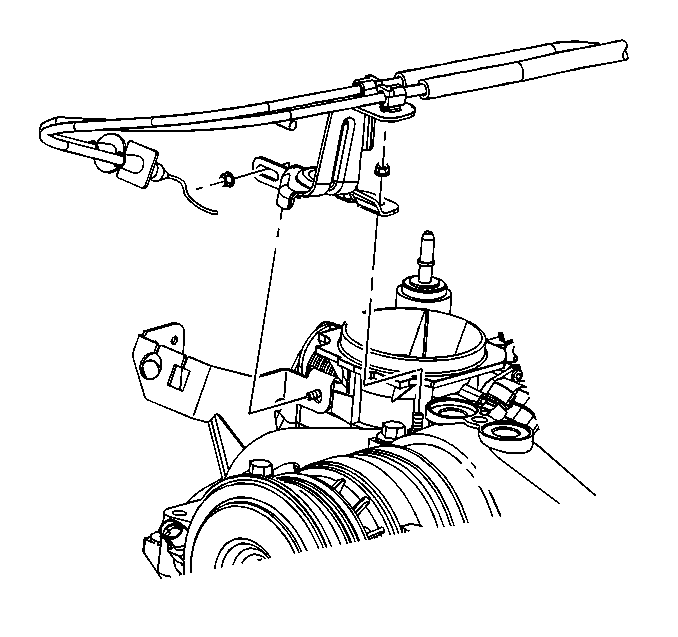
- Install the accelerator
control cable bracket with the accelerator control cable and the cruise control
cable and the nuts to the throttle body.
Tighten
Tighten the nuts to 9 N·m (80 lb in).
- Install the engine wiring harness and clip to the accelerator
control cable bracket.
- Install the cruise control cable, if equipped to the throttle
shaft and the accelerator control cable bracket. Refer to
Cruise Control Cable Replacement
in Cruise Control.

- Install the accelerator
cable to the engine cable bracket.
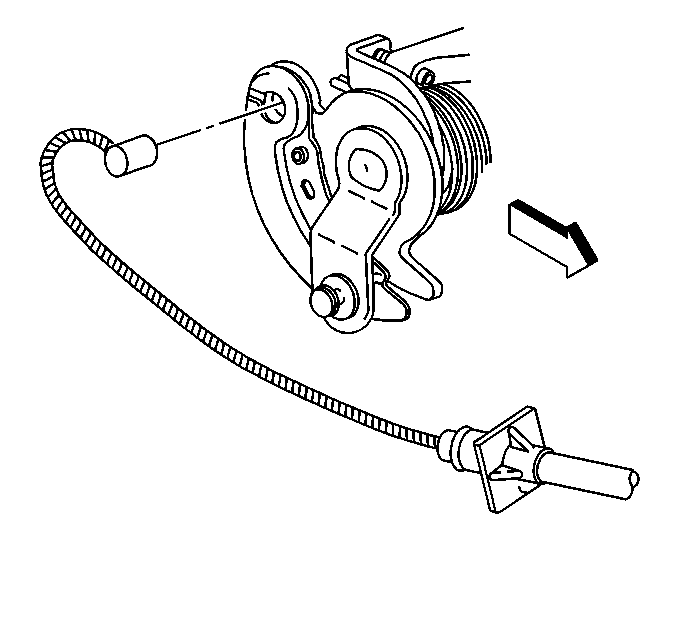
- Install the accelerator
cable to the throttle body lever.

- Install the accelerator
cable to the cable routing bracket.

- Connect the AIR crossover
pipe to the AIR pipe assemblies.
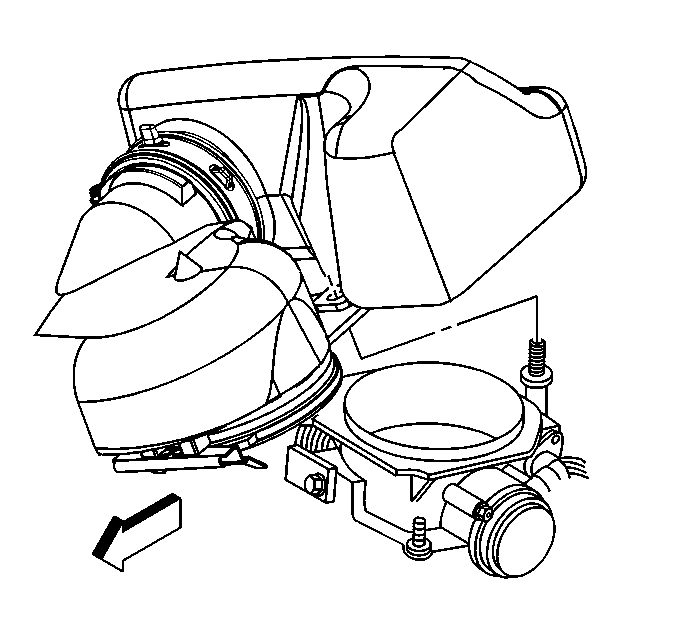
- Align the hinge clip with
the lip on the throttle body.
Install the air inlet tube and resonator to the throttle body by pivoting
the air inlet tube and resonator downward until the mounting stud is through
the hole in the air inlet tube.
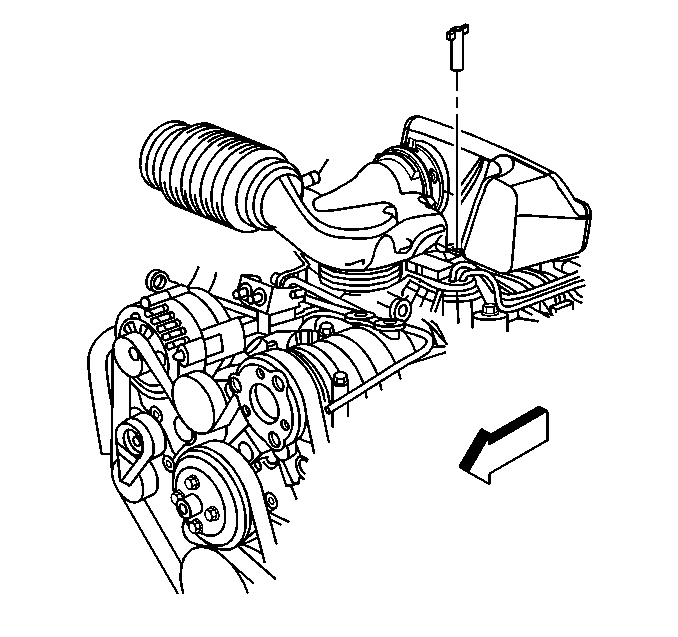
- Install the resonator
retaining wing nut.
- Connect the PCV hose to the air cleaner outlet duct.
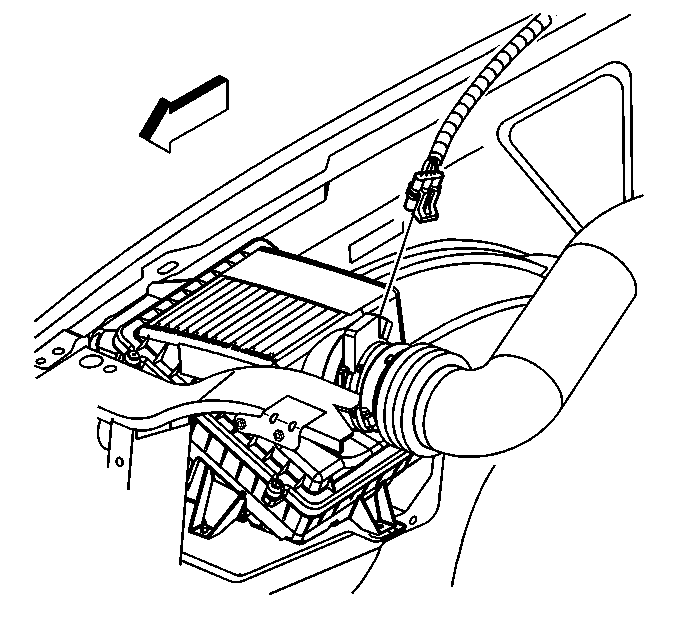
- Connect the MAF/IAT sensor
assembly harness connector.
- Connect the battery negative cable. Refer to
Battery Negative Cable Disconnection and Connection
in Engine
Electrical.
